If you're a coffee fan that enjoys brewing your coffee at home, it can be frustrating to have your once reliable coffee maker start to leak. Subsequently, you most likely have wondered, how do I fix my coffee maker? Why is it leaking? Do I need to purchase a new one? We've researched these topics extensively and have helpful advice to share with you.
There are several reasons why the coffee maker is leaking water from the bottom. It could be clogged by mineral deposits because the coffee maker is overdue for descaling. Another possibility is that the valve pump is broken, clogged, or damaged. A faulty water hose is another reason for leakage, and it may need to be replaced.
A multitude of problems could cause the coffee maker to leak. Also, the reason why could vary greatly depending on the brand and model of the small appliance. Do you have a leaky Cuisinart coffee maker and wonder why the repair methods are considerably different from a Keurig? Continue reading to learn more about the anatomy of coffee makers and how to correct leakages.

Reasons for coffee maker leakages
It can be frustrating figuring out which issue is causing the leaks. Consider checking the water reservoir for leaks, as this is a common culprit for leaking. If the coffee maker is filled over the max line, it will leak coffee or water from the bottom.
Have you forgotten to descale your coffee maker for the past couple of months? Coffee makers are easily clogged with minerals that will hamper their ability to make coffee efficiently, and in time will cause leakages.
The valve pump could be clogged with coffee grounds or mineral deposits, which will stop the water from flowing through properly. To determine if this is the issue. Turn the coffee maker off, and if the water doesn't flow through the fill tube, it is clogged. The valve will need to be unclogged. If the valve pump is sealed, this is a job that is usually best performed by a trained technician.
A faulty water hose located at the bottom of the coffee maker will cause leakage from either being loose or requiring replacement. Considering most coffee makers reach high temperatures of 130 f, it is a matter of time before the hose is weakened from continual heat exposure.
Generally, you could purchase the hoses from the brewer manufacturer or online. To tighten the water hose or replace it, you will need a small screwdriver to remove all four of the screws at the base. Then tighten the hose, or replace it and screw the bottom back onto the appliance.
Click here to view replacement water hoses at Amazon.
Why is my Hamilton Beach coffee maker leaking from the bottom?
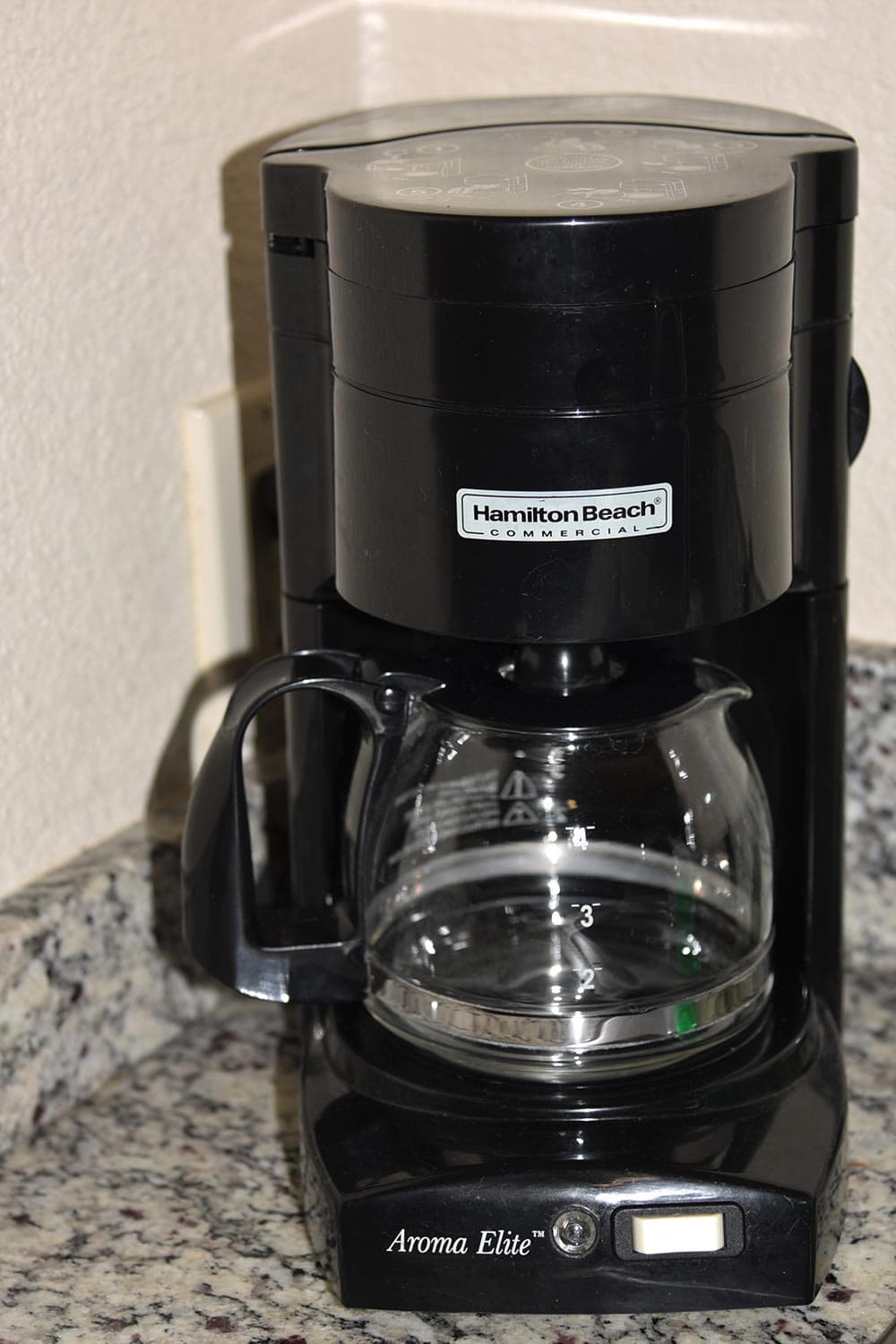
According to Hamilton Beach, if your Beach coffee maker is leaking from the bottom, the issue could be a buildup in the tank seal.
To remedy this issue, unplug the brewer and turn the brew tank upside-down over the sink. Next, press the dispensing valve, which is located at the bottom of the tank. Flush the valve with clean water for 30-seconds. Turn the right side up; the build-up should be cleared.
If this does not correct this issue, contact Hamilton Customer Service or Hamilton Beach repair chat service to connect with a repair technician.
How do I fix a leaky Cuisinart coffee maker?
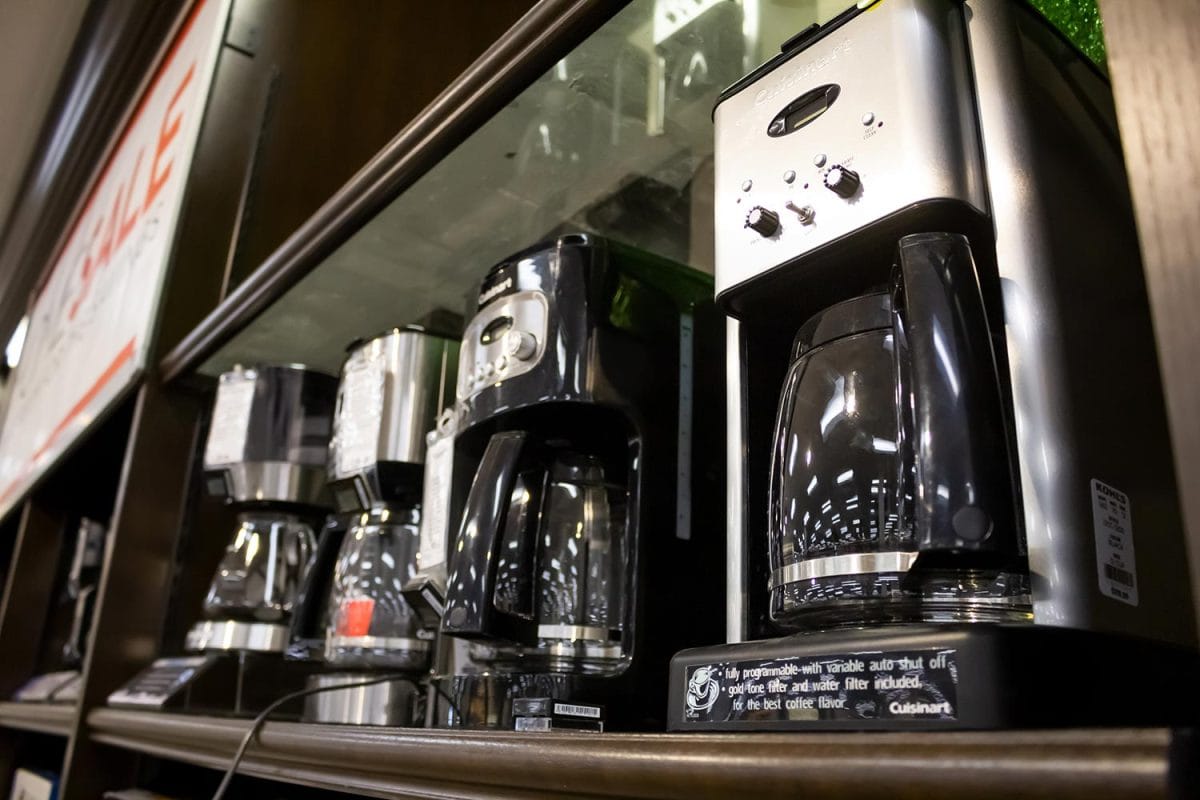
When the Cuisinart coffee maker is leaking from the bottom, generally, this is caused by a clogged or faulty valve pump, which could be flushed with water or replaced. The valves become clogged from coffee grounds and mineral deposits. If the valve is sealed within, you may have to have it professionally repaired to replace the entire pump and valve.
Contact Cuisinart Customer Service if you are in doubt about the next repair steps.
Another reason may be that the carafe or coffee pot has a damaged lid or fractured glass. In some cases, the break could be tiny and hard to detect.
Click here to view a replacement lid at Amazon.
How do I fix a leaking bottom of my Keurig?
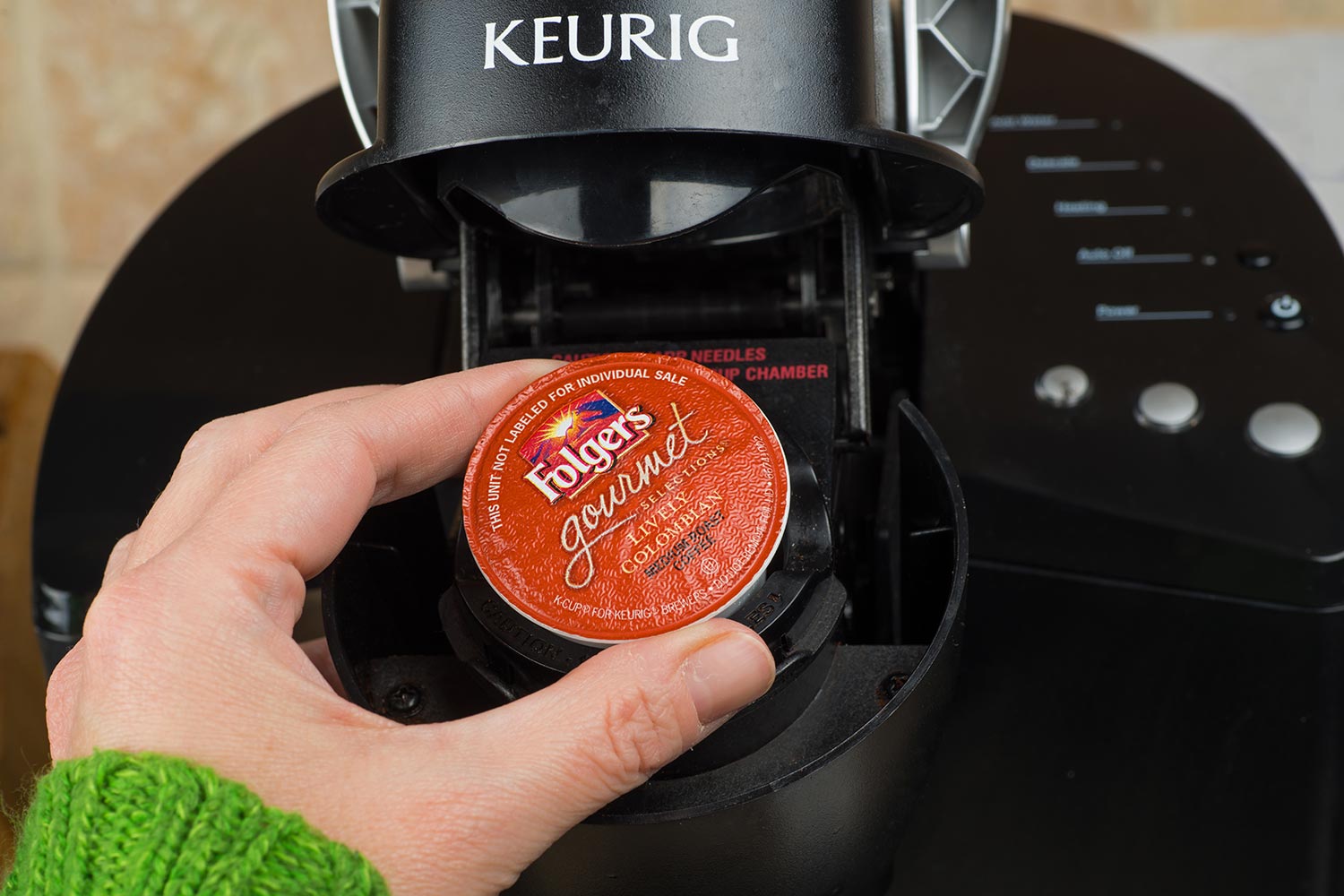
Keurig states that if your brewer is leaking from the bottom, the first step is to check if the water is coming from the cold water reservoir. To check this, remove the cold water reservoir, fill it with water, and hold it over the sink. Watch for any drips and leaks. Order a replacement reservoir to remedy this issue.
Click here to view a replacement water reservoir at Amazon.
If the water reservoir isn't causing the issue, contact Keurig Customer Service for further assistance.

How do you fix a clogged coffee maker?
Often, descaling the coffee maker will easily eliminate the vast majority of clogs created from mineral deposits. To descale the coffee maker, you could use a descaling solution sold by the manufacturers of your coffee maker or a homemade solution with white vinegar.
Word of caution--if you have a Keurig, it is discouraged to use vinegar for descaling purposes because the high level of acidity in the vinegar could damage the boiler or other internal heating elements.
Click here to view Keurig's descaling solution at Amazon.
How to descale a coffee maker with vinegar
Regularly descaling your coffee maker will reduce mineral buildup that will cause your brewer to leak and malfunction. Also, descaling will remove germy and oily buildups that could cause molds and yeasts to grow. Those unwanted bacteria could cause infections for those with compromised immune systems.
- Fill the water reservoir with equal parts of water and white vinegar. One could increase the percentage of vinegar to 3/4 if the coffee maker is exceptionally clogged. Otherwise, 50/50 is great for regular descaling.
- Insert an empty coffee filter. Turn the coffee maker on and allow it to brew until half of the carafe/pot is full.
- Allow the vinegar and water solution to soak for 30-60 minutes to remove debris.
- Allow it to finish brewing.
- Dump the vinegar solution, and flush the vinegar out of the coffee maker by running a brew cycle with plain water. You may repeat this step twice or more to remove the vinegar scent.
- Wipe the coffee maker's exterior with a warm cloth and water to remove any debris.
Click here to read our article about coffee filters.
Additional tips for avoiding issues that cause leakages
Avoid overfilling the water reservoirs. Those are designed for a specific amount of water. Never overfill. It will leak and could cause damage to the coffee maker and your counter. Regularly descaling your coffee maker will reduce stress on the connectors and valve pump. Generally, descaling every six to eight weeks is standard practice.
Consider brewing coffee with filtered water, which contains little to no mineral content that would otherwise clog your coffee maker. Avoid leaving water standing in the reservoir; to reduce moisture inside the coffee maker that encourages the growth of bacteria, molds, and yeasts.
Suppose you have returned from a two-week vacation and your coffee maker has been sitting unused for a couple of weeks. Consider brewing a full pot without coffee to flush the coffee maker. Doing so helps maintain a clean coffee maker and reduces the risks of bacterial growth in your morning cup of coffee.
Click here to read our article regarding boiling water with a coffee maker.
In Closing
Repairing small appliances can be a bit overwhelming. Please note that if performing repairs is out of your skillset, contact a professional for the task. It is better to seek assistance than risk personal injury. We hope this article has helped you feel confident about repairing your leaking coffee maker. Please visit Kitcheenseer.com soon for more helpful articles!






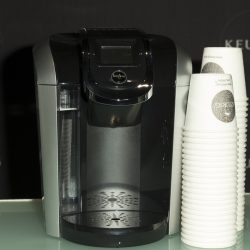

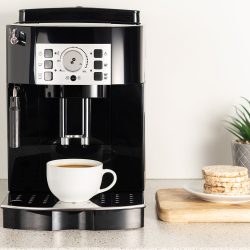
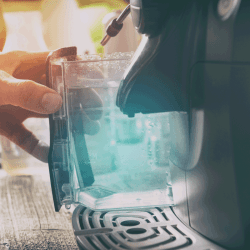
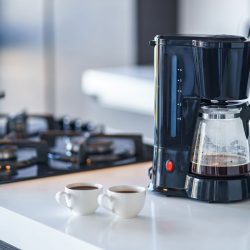
I have the answer. It is not that the beans are ground to fine or any of the other suggestions. I returned my Cuisinart to the manufacter and they promptly sent a replacement that leaked just like my first one. A friend gave me a box of Bunn filters. The box says “Our Filters Tower Above The Rest”. The filters go to the very top of the grounds container. Thus no more water flowing over the top.
How do you stop the tank leaking where it connect to the coffee maker , it is brand new .
I have had one Mr. Coffee 5 cup maker leak water on the counter, and one that leaked coffee from inside the bottom where the electronics are. What would cause that? How would the brewed coffee get down into the base while still depositing coffee into the pot?